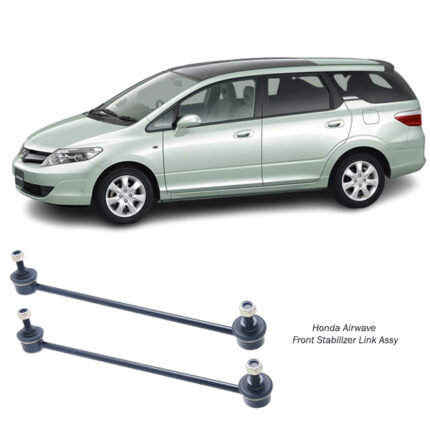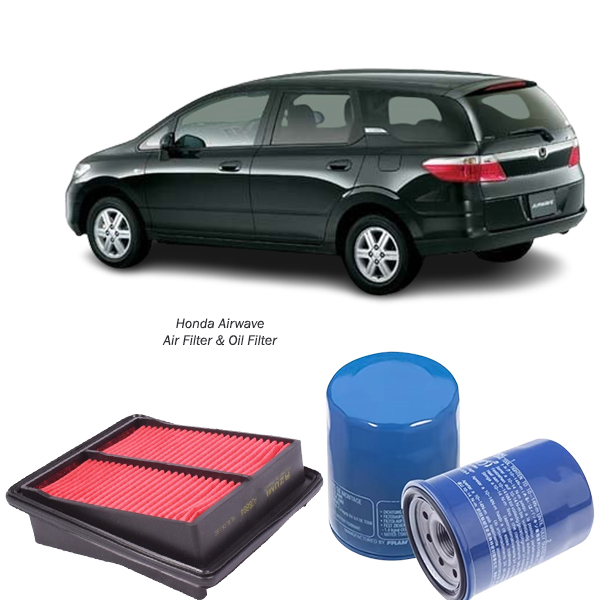-12%
Get Honda Airwave Air Filter And Oil Filter Combo 17220-PWA-J10 / 15400-PLC-004 in Kenya
Air filters and oil filters are two of the most critical components in a vehicle’s engine system. They play complementary roles in ensuring clean airflow and oil circulation, which are vital for engine performance, efficiency, and longevity. This article provides a detailed explanation of their functions, construction, benefits, maintenance tips, and troubleshooting in a comprehensive 1000-word guide.
1. Air Filter: Purpose and Importance
The air filter is designed to clean the air entering the engine, preventing contaminants like dust, debris, pollen, and other particulates from damaging internal components.
a) Functions of the Air Filter
- Protecting the Engine: Filters airborne particles that could scratch or damage the engine’s internal surfaces.
- Ensuring Proper Combustion: Supplies clean air for the fuel-air mixture needed for efficient combustion.
- Optimizing Fuel Efficiency: Helps maintain the correct air-to-fuel ratio, ensuring better fuel economy.
- Reducing Emissions: Prevents contaminants from entering the combustion process, which could lead to increased emissions.
b) Construction of the Air Filter
Air filters are made of specific materials designed to capture particles while allowing airflow. These include:
- Pleated Paper: A common material that balances filtration efficiency and airflow.
- Foam: Offers higher durability and is often used in off-road vehicles.
- Cotton Gauze: High-performance filters use oiled cotton gauze for better airflow and filtration.
- Housing: Enclosed in a sturdy casing that fits into the air intake system.
c) Types of Air Filters
- Panel Air Filters: Rectangular filters common in most vehicles.
- Round Air Filters: Cylindrical filters used in older vehicles and heavy machinery.
- Performance Air Filters: Designed for enhanced airflow in high-performance engines.
2. Oil Filter: Purpose and Importance
The oil filter removes contaminants from the engine oil, such as dirt, metal particles, and sludge. Clean oil is essential for lubrication, cooling, and protecting engine components.
a) Functions of the Oil Filter
- Removing Impurities: Filters out particles that can cause wear and tear in the engine.
- Extending Oil Life: Reduces the degradation rate of engine oil.
- Protecting the Engine: Ensures that oil circulates smoothly, reducing friction and overheating.
- Maintaining Oil Pressure: Facilitates proper flow and pressure, crucial for lubrication.
b) Construction of the Oil Filter
Oil filters are designed to withstand high pressure and temperature, and their construction includes:
- Filter Media: Typically made of cellulose, synthetic fibers, or a blend of both.
- Metal Canister: Houses the filter media and provides durability.
- Bypass Valve: Allows unfiltered oil to flow in case of clogging, preventing engine starvation.
- Anti-Drain Back Valve: Prevents oil from draining out of the filter when the engine is turned off.
c) Types of Oil Filters
- Spin-On Filters: Easy to replace and commonly used in most vehicles.
- Cartridge Filters: Require a separate housing and are becoming more popular due to environmental benefits.
- High-Performance Filters: Designed for racing or heavy-duty applications, offering superior filtration.
3. Benefits of Air and Oil Filters
a) Air Filter Benefits
- Engine Longevity: Prevents abrasive particles from damaging the engine.
- Fuel Efficiency: Ensures optimal airflow for precise air-fuel mixture.
- Cleaner Combustion: Reduces soot and deposits in the combustion chamber.
- Comfort: Improves cabin air quality by reducing dust and allergens.
b) Oil Filter Benefits
- Enhanced Engine Performance: Clean oil reduces friction, improving performance.
- Reduced Wear and Tear: Prevents contaminants from causing damage to engine components.
- Extended Engine Life: Ensures efficient lubrication and cooling.
- Cost Savings: Reduces the frequency of costly engine repairs.
4. Maintenance Tips for Air and Oil Filters
a) Air Filter Maintenance
- Regular Inspection: Check the air filter every 12,000 to 15,000 miles or as recommended by the manufacturer.
- Cleaning or Replacement: Replace disposable filters or clean reusable ones using appropriate methods.
- Consider Driving Conditions: Replace filters more frequently in dusty or polluted environments.
- Signs of Wear: Replace the air filter if it appears clogged, torn, or excessively dirty.
b) Oil Filter Maintenance
- Regular Oil Changes: Always replace the oil filter during an oil change to ensure compatibility with fresh oil.
- Use Quality Filters: Choose OEM or high-quality aftermarket filters for reliability.
- Monitor Oil Pressure: Low oil pressure may indicate a clogged or failing filter.
- Follow Manufacturer Guidelines: Replace the oil filter according to the vehicle’s maintenance schedule.
5. Signs of Air and Oil Filter Issues
a) Signs of a Clogged Air Filter
- Reduced Engine Performance: Poor acceleration or sluggish response.
- Increased Fuel Consumption: A dirty filter disrupts the air-fuel mixture.
- Black Smoke from Exhaust: Indicates incomplete combustion.
- Whistling Sounds: Airflow restrictions may cause unusual noises.
b) Signs of a Faulty Oil Filter
- Low Oil Pressure: May indicate a clogged filter or bypass valve activation.
- Metallic Noise: Lack of lubrication due to insufficient oil flow.
- Dirty Oil: Contaminated oil is a sign of filter inefficiency.
- Oil Leaks: A damaged or improperly installed filter can cause leaks.
6. Replacement Process
a) Replacing the Air Filter
- Locate the Air Filter Housing: Usually found near the engine bay.
- Remove the Old Filter: Open the housing and carefully extract the filter.
- Clean the Housing: Remove any debris or dust from the housing.
- Install the New Filter: Place the filter correctly and ensure the housing is secured.
b) Replacing the Oil Filter
- Drain the Oil: Use a drain pan to collect old oil.
- Remove the Old Filter: Use a filter wrench to loosen and remove the filter.
- Prepare the New Filter: Apply a small amount of fresh oil to the rubber gasket.
- Install the New Filter: Tighten the filter by hand or using a wrench.
- Refill the Engine Oil: Pour the recommended type and quantity of oil.
7. Environmental Considerations
a) Recycling Air Filters
- Paper-based filters can be disposed of, while reusable filters reduce waste.
- Some manufacturers offer recycling programs for used filters.
b) Recycling Oil Filters
- Properly drain used oil filters before disposal.
- Take used filters to a recycling center to avoid environmental harm.
8. Troubleshooting Common Problems
a) Air Filter Issues
- Improper Fitment: Ensure the filter is the correct size and installed securely.
- Over-Cleaning Reusable Filters: Excessive cleaning can damage filter media.
b) Oil Filter Issues
- Leaks: Check for proper installation and ensure the gasket is intact.
- Bypass Valve Failure: Replace the filter if the valve malfunctions.
9. Choosing the Right Filters
a) For Air Filters
- Select filters compatible with your vehicle’s make and model.
- Consider high-performance filters for specific needs.
b) For Oil Filters
- Ensure compatibility with your vehicle’s oil type and engine specifications.
- Opt for filters from trusted brands with good reviews.
10. Conclusion
Air filters and oil filters are indispensable for maintaining engine health and performance. By ensuring clean airflow and oil circulation, these components reduce wear, improve efficiency, and prolong engine life. Regular inspections, timely replacements, and using quality filters are essential practices for any vehicle owner. Investing in proper filter maintenance saves money on repairs and ensures a smooth, reliable driving experience
Follow us on Facebook for more parts.



